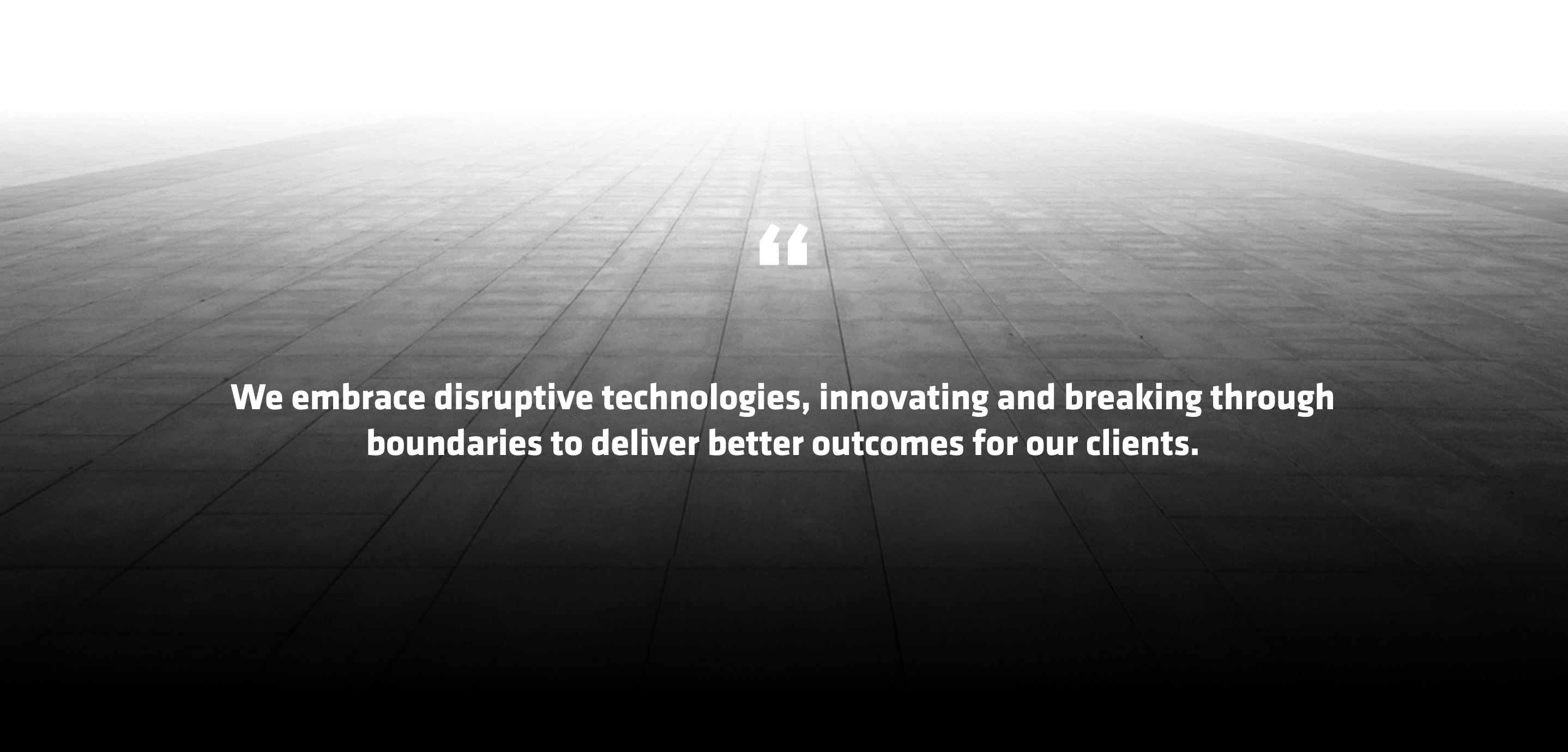Prime Credit strategy guides our investment decisions and serves as our North Star. Put simply, Prime Credit's five-part strategy is to deliver, diversify and expand responsibly, with Equitable Holdings. We deliver outstanding core investment services to our clients while developing high-quality, differentiated services including private and public alternatives, responsible investing, and others, across faster-growing geographies and channels, in partnership with Equitable.
As proactive investors, engagement plays a crucial role in our approach. Annually, Prime Credit analysts interact with leaders of both corporate and non-corporate entities, such as municipalities, supranational organizations, and sovereign issuers. Additionally, we engage selectively through our proxy voting initiatives.
These interactions enable us to evaluate, discuss, and advocate for improved business practices and strategies to tackle swiftly evolving material ESG concerns. We are confident that engagement can enhance our research efforts and deliver superior outcomes for our clients.

The Prime Credit Responsibility team, consisting of specialists in corporate responsibility and environmental, social, and governance (ESG) matters, collaborates closely with our investment teams, central to our responsible investment initiatives. Their efforts are bolstered by both internal and external resources, and are supervised by our Responsibility Steering Committee and the Prime Credit Board of Directors.
We see opportunities others miss. Our unique insights
and unwavering conviction create a powerful catalyst,
fueling growth and unlocking potential.

Prime Credit leverages AI to analyze over 400 company reports and filings each day, identifying potential risks within relevant companies, whether in PCG's clients' portfolios or for potential direct investments. This analysis is supported by natural language processing (NLP), an AI technique capable of comprehending human language. NLP is instrumental in generating investment signals, which serve as alerts to detect underperformance or forecast positive trends.
By leveraging the power of an investment calculator,
you can gain a better understanding of how your money can work for you,
make informed decisions about your financial future,
and stay on track to achieve your investment goals.

Note: To use the calculator, enter the principal amount and click the blue '=' button.
Driven by the pursuit of insight that unlocks opportunity, our shared values guide our daily work. These values form the bedrock of our culture, empowering individuals to bring their unique talents and unleash their full potential.
Prime Credit's Executive Officers and Board of Directors, diverse in their perspectives, drive the firm's strategic direction, reflecting our commitment to strong governance.

Addressing climate change extends beyond macroeconomic strategies. An increasing array of sectors, spanning from electric vehicles to wind farms, find themselves at the forefront of a decarbonizing economy—and all are experiencing growth rates surpassing that of the US economy.
These innovative enterprises are poised to spearhead the shift with business models tailored to climate transition, along with offerings that facilitate global decarbonization. Anticipated is their potential for sustained growth spanning multiple decades.
Certainly, investors maintain a cautious stance given the prevailing uncertain macroeconomic landscape, notably characterized by escalating interest rates and significant inflation. Undoubtedly, these disruptors also influence the investment selection process, but they should be assimilated alongside climate risks, not separately, in identifying enterprises poised to thrive in the evolving economy.
Investors are increasingly drawn to the growth prospects presented by companies offering climate solutions. In 2022, global investment in energy-transition technologies and services, encompassing renewable energy, electric vehicles, energy efficiency, and hydrogen, surged to a record $1.1 trillion, marking a notable 31% rise from the previous year (Display). Notably, China emerged as the primary driver of this growth, contributing approximately half of the total investment. Equally significant, this surge has brought investment in energy-transition technologies to parity with fossil fuels for the first time. Projections indicate that by the end of this decade, spending on decarbonization solutions will surpass expenditures on fossil fuels by at least fourfold.
The increasing dedication to achieving global carbon reduction targets transcends industries traditionally associated with climate-friendly practices. A growing number of companies, especially in the consumer discretionary, information technology, and industrials sectors, are demonstrating their commitment to science-based greenhouse gas reduction objectives.

Artificial intelligence (AI) provides investors with specialized instruments to navigate the expansive, intricate, and swiftly evolving financial markets. However, its implementations vary depending on the strategy. Through these case studies, we illustrate the various ways AI is employed to augment the investment process and achieve improved client results across different asset classes.
Artificial intelligence (AI) is rapidly evolving into a crucial tool for proactive credit managers, aiding them in maneuvering through a sea of perpetually shifting data to evaluate opportunities. This makes it an ideal match for credit investment strategies and systematic fixed-income methodologies.
Consider systematic bond investing as a three-part procedure: firstly, discerning which bonds are appealing or unattractive through an impartial ranking system; secondly, refining these findings to construct a portfolio; and finally, executing that portfolio adeptly. AI can enhance the initial and concluding stages by aiding in decision-making regarding purchases and sales, estimating absent data, and identifying areas with attractively priced liquidity.
Systematic fixed-income strategies strive to surpass bond-market benchmarks primarily via the selection of individual securities. Their objective is to assess the securities within a benchmark to pinpoint potential for outperformance (alpha), employing diverse predictive factors derived from different data types or signals, including valuation, momentum, or sentiment.
Machine learning (ML) techniques have the potential to enhance analytics across various valuation factors, uncovering novel signals and amplifying the efficacy of existing ones, thereby bolstering systematic managers’ capacity to rank securities. For instance, AI can generate valuation scores for individual bonds as well as issuers, offering diverse perspectives to detect anomalies in bond prices. Moreover, AI introduces a fresh perspective to default probability analysis, refining conventional academic models by deploying a wider array of analytics empirically across a larger dataset.
The comprehensive scope AI offers in research is a crucial aspect of natural language processing (NLP) analysis. A human analyst team can only process a fraction of the vast data available from numerous company reports, struggling to consistently analyze the information conveyed in words and phrases across various companies. In contrast, transformer-based language models in AI can manage the entire dataset with absolute consistency, providing breadth that enhances the effectiveness of active return streams in systematic strategies.
Apart from individual security selection, which we consider the primary advantage of systematic fixed-income portfolios, traditional active management employs alternative methods. These methods encompass sector and industry biases and timing strategies reliant on interest-rate exposure (duration) and credit risk. We believe these strategies can also leverage AI technologies. Our research suggests that ensemble-based machine learning (ML) models offer notable benefits, generating risk metrics and beta timing indicators with robust predictive capabilities. Emerging techniques like topological data analysis, dynamic time warping, and signatures also hold promise as potential sources of alpha.
Analyzing bond prices may seem mundane to many. Sorting through extensive lists of closing prices and attempting to calculate accurate values for absent data can be tedious, repetitive, and prone to errors. However, this task is not mundane for AI. Machine learning (ML) can swiftly and accurately recognize price trends to fill in missing data points, covering the entire dataset. Likewise, AI can supplement absent liquidity data by analyzing trading behaviors across various related securities.
So, what does this translate to in practical terms? For systematic bond strategies focused on trading corporate credit, grappling with the restricted liquidity and tradability of specific bonds poses a challenge in capturing and interpreting intraday movements within the credit market and in deriving precise intraday market signals. AI emerges as an exceptionally effective solution to address these challenges.
At PrimeCredit, we utilize sophisticated machine learning models to calculate up-to-the-minute prices for corporate bonds that have outdated or unavailable prices. We achieve this by referencing real-time prices of liquid counterparts and other pertinent market factors. This approach, supported by model-generated prices, offers us a comprehensive perspective of the trading landscape and acts as the basis for our research on intraday market signals.
Predicting the forthcoming liquidity dynamics throughout the trading landscape is crucial for daily credit trading activities. In this regard, machine learning (ML) tools can assist in uncovering non-linear correlations between the attributes of bonds and their anticipated liquidity trends. Grasping the likelihood of executing trades for specific bonds at a desired volume with a satisfactory spread is pivotal for effectively managing a systematic portfolio. We believe that interpretable ML models can yield robust outcomes in this domain.
Picture a portfolio manager who has graduated from the most prestigious universities globally, boasting a photographic memory and an in-depth grasp of macroeconomics and geopolitics. She avidly consumes news and holds vast information on stocks, bonds, and currencies. Her mind effortlessly sifts through the nuances of her foundational knowledge to pinpoint the most promising assets influenced by the ramifications of ongoing events.
Naturally, such a superhuman investor is purely hypothetical. The human brain lacks the capacity to store vast amounts of diverse information in a structured and instantly accessible format, triggered by specific keywords. However, we posit that AI-driven models and systems have the potential to mimic human decision-making on a machine scale, enabling more informed investment decisions free from behavioral biases.
To unearth opportunities, the AI-driven investment approach must extend beyond conventional data reservoirs and quantitative methodologies. Human cognition may err by conflating correlations with causal relationships. Conversely, an AI-driven investment model should discern noteworthy occurrences and enduring causal connections, elucidating the potential development of contagion chains.
This involves concentrating on significant narratives and identifying financial assets that could be influenced in less apparent manners. Essentially, the AI-driven investment approach should ascertain which equities, bonds, and currencies have not yet factored in the repercussions of unfolding events. Confirming the timing and quantifying the anticipated alpha necessitates complex, multidimensional machine learning models that account for nonlinear dynamics and cross-asset interactions.
Numerous investment teams leverage NLP technology to analyze texts and generate sentiment indicators. However, as these signals are swiftly integrated into securities, they often align with momentum strategies, in our assessment. To unearth alpha opportunities, an AI-driven investing brain needs to detect enduring patterns with sustained efficacy over the long term, fostering alpha potential that remains uncorrelated with other asset classes.
This necessitates training a model that encompasses a specialized yet varied array of subjects, such as geopolitics, technology, finance, and macroeconomics, which might influence asset prices. The AI system is regularly supplied with information from reputable and unbiased sources, ranging from the International Monetary Fund to the World Trade Organization and global central banks. Continuously evolving, it currently comprises tens of millions of nodes (i.e., words and word combinations) in its knowledge graph.
Leveraging the primary themes, this dynamic knowledge graph actively engages with contemporary events as they unfold. It relies on a curated selection of trusted media outlets and assesses news based on its potential for sustained impact on financial markets, distinguishing it from fleeting trends. The top-ranked news items, deemed potentially most influential, are then employed to pinpoint the most relevant financial assets to invest in corresponding themes.
The subsequent step involves linking influential themes to investment prospects by assessing the potential impact of each recognized theme on financial assets spanning a wide spectrum, encompassing stocks, equity indices, government bond indices, commodities, and currencies.
When a human investor identifies a theme, it may not always foresee the secondary and tertiary consequences. For instance, stricter carbon regulations would naturally impact car manufacturers and crucial raw materials employed to minimize emissions. However, the ripple effect is extensive and less apparent; it could extend from alternatives for palladium (utilized in catalytic converters in vehicle exhausts) to the electric vehicle supply chain, to other sectors reliant on lithium from technology firms producing chips and hardware, to renewable energy storage solutions.
An ML model can detect patterns and measure the interconnections among multiple assets, aiding in return prediction by indicating the direction (long or short) and magnitude for each asset. This model assesses the anticipated alpha for each security earmarked as a candidate from a pertinent theme. Naturally, not every identified security is deemed suitable for portfolio inclusion. Quantitative tools can further assist in devising a strategy that seeks to optimize the alpha potential of shortlisted securities while implementing various levels of risk management.s
Equity portfolios grounded in fundamental processes may not appear to be the most apparent choices for implementing AI technology. After all, stock pickers rely on thorough research, expertise in sectors and companies, and, crucially, human judgment to pinpoint alpha opportunities.
We believe that AI won't supplant human analysts in active equity portfolios in the near future. However, the necessity for advanced tools to handle risk and devise portfolios with robust risk-adjusted returns has become increasingly crucial. In our opinion, AI tools can enhance equity investment processes primarily in three aspects: efficiency, risk management/portfolio construction, and signal generation.
For analysts to maximize productivity, their attention should be directed towards probing the significant inquiries armed with the finest data. However, historically, gathering top-tier information in a data-saturated environment was both time-consuming and imperfect. A continuous flow of information emanates from news reports, official filings, and earnings calls. Consequently, investment teams were compelled to concentrate their profound research efforts on a select few high-priority holdings or promising investment prospects.
Presently, ChatGPT can summarize transcripts of earnings calls and events that analysts may not typically attend. If utilized effectively, it's akin to having 10,000 interns assisting analysts in hastening the revelation of fresh information. Internal chatbots can aid analysts in becoming more efficient at extracting information from an extensive array of notes and reports; they can also assist quantitative analysts in coding, expediting crucial data discovery processes.
Cluster analysis, an AI technique we've integrated into our risk management toolkit for some time now, is designed to uncover latent risks hidden within unseen market trends, often overlooked by conventional risk models. This advanced machine learning method categorizes stocks into clusters based on their correlated movements over a specified timeframe. For instance, it assists in distinguishing groups of stocks associated with emerging sub-themes or risks, providing valuable insights to portfolio managers for mitigating unintended exposures.
Beyond numerical data such as stock returns, unstructured text presents another avenue for uncovering connections between companies and trends. Leveraging natural language processing (NLP) and word embeddings, we can systematically analyze various materials like company transcripts, 10-K and 10-Q forms, and Wikipedia data to identify thematic stocks or potential portfolio risks. This approach offers a scalable method to identify stocks linked to overarching themes such as demographics and aging, AI, or urbanization, which may significantly influence risk and return dynamics.

In any technology revolution, the transition from
hope and hype to productivity and profits is rarely
smooth. While commercial uses of generative
artificial intelligence (AI) are just starting to
emerge, equity investors can map out strategies to
find companies that are best positioned to reap
business advantages.
Since the public release of ChatGPT in November 2022, generative AI has been hailed as a revolutionary technology. Businesses in various sectors are touting its potential, and investors are eager to identify frontrunners. Projections indicate a significant uptick in spending on AI-related software, services, and infrastructure. However, despite the awe and anticipation surrounding this new innovation catalyst, the route to profitable monetization of the technology remains uncertain.
There are multiple avenues for companies to generate revenue from generative AI. Firstly, businesses utilizing the technology can enhance productivity within their operations. Secondly, platforms offering generative AI solutions can profit by establishing competitive pricing strategies. Lastly, suppliers of essential hardware required to support the technology, often termed "picks and shovels" providers, can also capitalize on its adoption. These paths to monetization are closely interconnected.
Market dynamics have swiftly identified winners in the realm of "picks and shovels," exemplified by the strong performance of NVIDIA this year, known for producing indispensable graphics processing units (GPUs) crucial for AI applications. Conversely, discerning successful strategies among platforms and users remains challenging. However, we are witnessing these entities adopt diverse methods to translate productivity enhancements into tangible profits.
Several companies anticipate that AI could yield productivity enhancements ranging from 20% to 30%. While some notable instances have highlighted the possibility of staff reductions, the predominant focus lies in augmenting output while maintaining the existing workforce. For instance, AI holds the promise of automating numerous mundane, labor-intensive activities, thereby enabling professionals to allocate their time towards higher-value tasks for their organizations.
The realization of productivity gains will hinge on the affordability of the technology. Consider a scenario where a company aims to enhance the productivity of a $100,000-per-year employee by 25%. The value proposition varies significantly depending on whether the AI solution for that worker costs $5,000 or $20,000. Consequently, in the current phase of the technology's development, many investors are closely scrutinizing how AI vendors will price their offerings.
For AI platforms, determining the optimal price point is influenced by the expense of computing infrastructure. AI-supporting technology is notably costly, given the scarcity of crucial infrastructure components like GPUs. Consequently, AI vendors must strike a balance between meeting their customers' productivity demands and managing the costs associated with servicing them.

Pharmaceutical firms frequently command attention in the healthcare arena. From COVID vaccines to treatments for Alzheimer's, pioneering pharmaceutical products aspire to cure human ailments and enhance quality of life. Investors are frequently drawn to the potential of a blockbuster drug to eliminate a stubborn illness and yield substantial profits.
As major players in the healthcare sector, big pharma firms frequently hold significant weights, often dominating sector positions within global equity portfolios or standalone allocations. However, an excessive focus on pharmaceuticals may constrain a portfolio's potential. Companies involved in diagnostics, technology, and equipment manufacturing, aimed at tackling the world's pressing medical challenges, are gaining significance in driving progress within the healthcare sector.
Over the past two decades, transformations in the healthcare benchmark highlight this evolution. The proportion of pharmaceutical firms within the MSCI World Health Care Index has decreased from 82% in 2000 to 41% presently (Display). Meanwhile, other sectors have gained prominence, presenting equity investors with a wider range of prospects in segments like life sciences tools and services, as well as technology and equipment.
Diagnostics and Life Sciences Tools and Services—These sectors are pivotal in medical procedures, not just treatments. Sophisticated testing and imaging techniques enable healthcare providers to detect diseases in their nascent stages, enhancing treatment effectiveness and recovery prospects. Moreover, genome sequencing capabilities hold the promise of unveiling new drug potentials and facilitating early disease detection.
When pharmaceutical firms engage in testing new drugs, they often subcontract clinical trials. Eurofins Scientific, headquartered in Luxembourg, stands as one of the major diagnostic companies globally, providing an assortment of services ranging from clinical trials to environmental and food testing. In Japan, Synnex offers diagnostic apparatuses for blood analysis, catering to various needs from basic blood type identification to liquid biopsies for cancer detection and Alzheimer's disease screening.
In biotech research and development, pioneering drug development methods, like gene therapy or mRNA vaccines, have traditionally required substantial capital investment. Biotech firms have had to invest in numerous tanks for manufacturing biologic drugs across various sites. Germany's Sartorius Stedim Biotech has introduced a reusable system for the steel tanks utilized by biotech companies, reducing costs during the R&D phase while also being environmentally conscious.
Technology and Artificial Intelligence (AI)—In comparison to other sectors, healthcare has historically lagged behind in embracing high-tech advancements. However, there's a notable shift underway. Companies adept at integrating new technologies have the potential to revolutionize the delivery and provision of care. Such innovative entities can be found across various segments within the healthcare sector.
AI is being integrated into commercial solutions by firms such as Veeva Systems from the US and ICON based in Ireland. With the advancement and broader adoption of AI for diagnostic purposes, we anticipate a surge in demand for companies providing healthcare-related software as a service. Veeva and Japan's M3 provide a spectrum of software services spanning clinical trials, home health monitoring, and pharmaceutical sales marketing tools.
Equipment and Supplies—From multinational pharmaceutical companies to local clinics, the tools and equipment employed in delivering healthcare solutions are continuously evolving. Innovative equipment utilized in life-saving procedures can significantly enhance patient outcomes. Take, for instance, Edwards Lifesciences, a manufacturer of transcatheter aortic valve replacement (TAVR) devices, which addresses a significant heart condition through minimally invasive procedures. According to company reports, the global market for TAVR equipment is projected to expand from $7 billion in 2024 to $10 billion in 2028.
Surgeons are witnessing a rapid technological evolution. Presently, a growing array of procedures are leveraging robotic tools, empowering surgeons to navigate challenging anatomical regions with precision, through minimally invasive incisions, leading to reduced complications and quicker recovery periods. Intuitive Surgical, based in the US, produces a robotic surgical platform widely utilized in American operating theaters and is experiencing expanding adoption internationally, particularly in Europe, Japan, and China, presenting substantial growth prospects in our assessment.
Although each industry within healthcare presents unique dynamics, we advocate for investors to seek out three key attributes when identifying compelling healthcare enterprises across the sector.
Initially, prioritize products and services that enhance patient healthcare outcomes. Subsequently, companies positioned to assist financially constrained healthcare systems in reducing costs are likely to experience robust demand. Lastly, products and solutions that simultaneously enhance outcomes and economize expenses should yield profitability for the enterprise.
In our perspective, firms embodying these three traits operate within a virtuous cycle. The dynamics of a robust ecosystem furnish these companies with the groundwork to reinvest cash flows effectively, thereby fostering sustained earnings growth. We advocate that equity investors prioritize business fundamentals over attempting to forecast scientific breakthroughs, a notoriously challenging endeavor.
Certainly, pharmaceutical firms that fulfill the criteria of a robust ecosystem warrant inclusion in a diversified healthcare stock portfolio. However, rather than positioning drug manufacturers as the cornerstone of a healthcare portfolio, the initial focus should be on identifying high-caliber business models, irrespective of their location within the evolving landscape of medical offerings and services.
